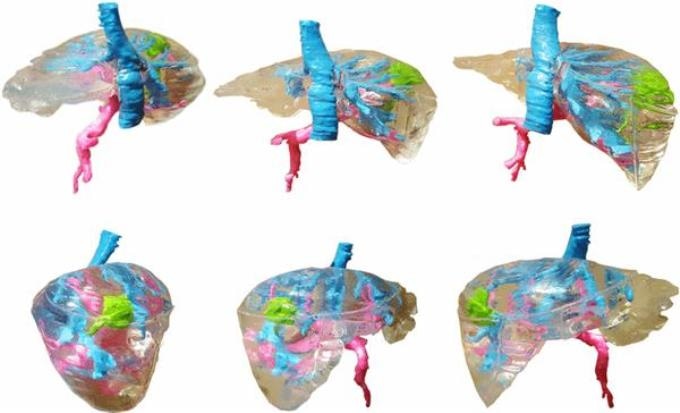Feb 23 2017
A team of researchers from the Jagiellonian University Medical College in Krakow, Poland have successfully 3D printed a preoperative planning model of a human liver for only $150. The research project serves to demonstrate that 3D printed patient-specific surgical models can be made at an affordable cost using accessible 3D printing technologies.
 Credit: 3Ders.org
Credit: 3Ders.org
In recent years, the medical community has come to recognize the benefits of using patient-specific anatomical models to help prepare and plan for surgeries as well as to help patients understand the procedures they will be undergoing. Understandably, 3D printing has been a big part of creating these medical models, as the technology is ideal for small-batch fabrication of complex objects.
As the researchers argue, however, the implementation of 3D printed preoperative models in hospitals has been somewhat limited due to the high cost of industrial 3D printers and the complexity of certain 3D modeling software programs. In an effort to introduce a more accessible alternative, the research team, led by Jan Witowski, has demonstrated a method that uses affordable FDM 3D printing technology, open-source software, and silicone casting to create detailed, patient-specific models.
The research, which was recently published here, demonstrates this method through the manufacturing of a liver model, to be used in the preoperative planning for a laparoscopic liver hemihepatectomy for colorectal cancer metastases. “This paper presents a cost-effective technique of preparing 3D printed liver models that preserves the shape and all of the structures, including the vessels and the tumor, which in the present case is colorectal liver metastasis,” reads the abstract.
To make the 3D printed liver model, the researchers first obtained a CT scan of the patient’s liver, which they segmented, transformed into 3D models, and subsequently 3D printed using an FDM 3D printer and PLA filament. According to the team, the liver model parts took roughly 72 hours to print and were executed in six print jobs. Once the pieces were printed, they underwent some post-processing to ensure smooth surfaces.
The next phase was to assemble the 3D printed liver parts, which included two liver parenchyma parts, the portal vein, the inferior vena cava connected to the right hepatic vein, the tumor, and a few others. To assemble them, the team carefully glued the pieces together guided by an assembly simulation.
Once the liver model was fully assembled, it was then reinforced using insulating tape and plasticine (to prevent silicone from leaking out during the casting). Next, using a small hole drilled into the top of the liver model, a mixture of silicone rubber and OL-1 catalyst was poured into the model, and was left to cure for 72 hours at room temperature. Once the silicone was set, the outer parts of the 3D printed liver model were removed (using a sharp blade to cut through the adhesive). The result? A life-size, transparent liver model with color-coded interior parts.
According to the researchers, their method allowed them to make a preoperative model for about $150 and in 160 hours. “Liver malignancies surgery is not the only application of this method or of 3D-printed models,” the study reads. “The relatively long printing time may limit the use of this technique in emergency surgeries; however, elective procedures, which represent the majority of hepatic resections, can greatly benefit from this 3D printing method.”
Looking forwards, the researchers have already started a new collaboration with the vascular and cardiac surgery departments at their university.
Source: http://www.3ders.org/